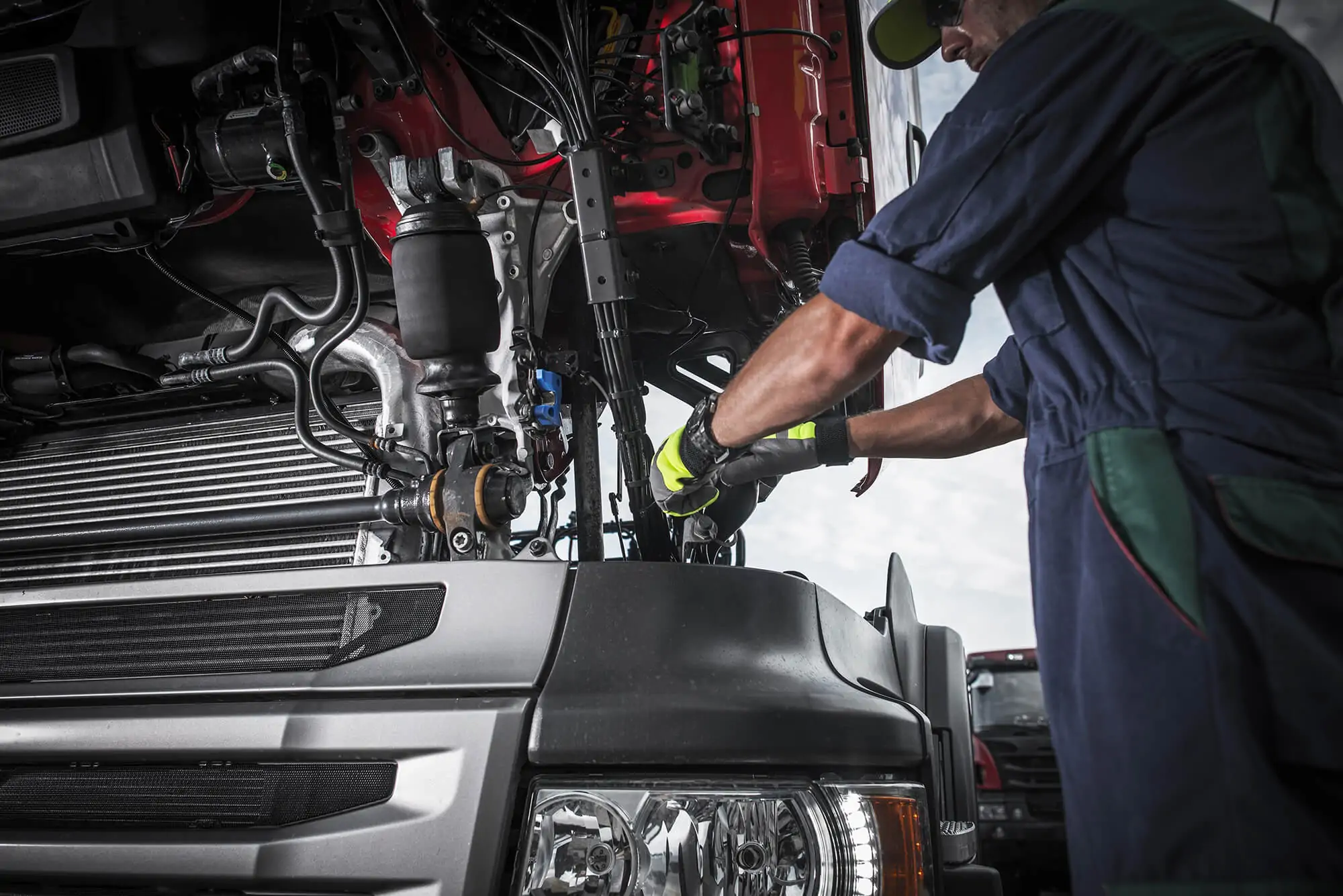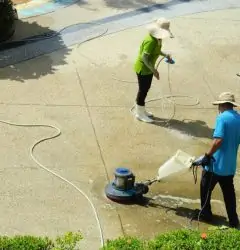26 Jun

What Is a Truck Inspection Checklist?
If you have a business that requires transporting goods or important supplies from one place to another, you must be good friends with trucks of various types. These long-haul vehicles are very helpful and can run on almost any type of road from smooth to rough. As per their function, they easily wear and tear, and that too faster than any other vehicle. They are the best means of transportation, and, hence it is crucial to have a maintenance checklist prepared to ensure that your trucks work fine and operate all the time properly.
Truck maintenance checklists provide an outline for ensuring that all parts and areas of the truck are in good working condition. If they require repairing, replacing, or fixing, it gets done immediately for minimizing the risk of unexpected breakdowns and unplanned downtime.
Ensuring that your truck has zero problems makes it easier for you to operate normally and efficiently. As a business that has regular operational activities to perform, it is crucial to avoid unfortunate and unexpected breakdowns and failures that might cost you more than just a small amount of money. Truck maintenance is necessary for all of your vehicles to continue operating with zero interruptions. You can get it done from a local vehicle maintenance service center, or you can hire your in-house team so they can work according to a well-structured truck maintenance checklist.
How To Design A Truck Maintenance Checklist Template?
You are counting on your trucks for getting your work done regularly, and for that purpose, you need your trucks to be in good shape and condition. When you turn the key, you expect your truck to start immediately and run smoothly without any unexpected failures and breakdowns. One of the best ways to ensure that your truck runs smoothly is to maintain a truck inspection checklist.
Not leaving anything to chance is a wise decision. Performing inspection and maintenance regularly allows you to target problems before they cause serious damage and avoid unplanned downtime that would cost you more than fixing a minor fault would.
Creating Your Checklist
The most crucial step while developing a preventative maintenance program is to maintain a truck maintenance checklist. As there are different types of trucks, they all will have a checklist to themselves based on their unique features, functions, and options. However, for preparing a truck maintenance checklist, it is better to understand the overall structure that you can follow:
- Cab – considering items that relate to the truck’s safety and controls. It includes warning alarms and lights, dashboard gauges, lighting switches, seatbelt, HVAC controls.
- Underhood – your truck’s underhood preventative maintenance checklist must deal with verification of all fluids conditions and levels, an inspection of gaskets and hoses for leaks, verification of all hydraulic circuits and pulleys, etc.
- Chassis – performing regular chassis preventative maintenance, which involves checking the pressure of tires, fuel line, breaks, suspension verification, testing of brakes, checking wheel bearing, etc.
These are some common things that you should remember when preparing a checklist for your truck. If you would like to have some help in this regard, let our team help you out!
Semi Truck Maintenance Checklist
Here are some important things to remember when preparing a semi-truck maintenance checklist:
- Engine Oil, Filter Changes
- Transmission Fluid
- Drive Shafts or CV Joints
- Drive Belt, hoses, and Serpentine Belt
- Fuel System
- Cooling System
- Transmission and Engine Mounts
- Tune-Ups
- Tires
- Wheels and Rims
- Exhaust System
- Components of Electrical System
- Braking System
- Suspension and Steering System
- Undercarriage and Frame
- Horn
- Seat Belts
- Seat Structure
- Exterior and Interior Lights
- Body, Mirrors, and Glass
- Windshield Wiper System
- Auxiliary Systems
Heavy-Duty Truck Maintenance Checklist
A heavy-duty truck preventive maintenance checklist must cover the following inspections:
Vehicle Identification
- Registration Number
- VIN/Chassis Number
- Compliance Plate
- Seating Capacity
- Make/Model
- Body Type
- Main Body Colour Engine Number
- Cylinders
- Odometer Reading (where fitted)
Brakes
- Brake Components
- Air/Vacuum System (including trailer breakaway protection)
- Service Brake
- Park Brake
Couplings
- Fifth Wheel/Ballrace
- Pin Couplings/Pintle Hooks
- Towbar
- Towing Attachments
- Safety Chains/Cable Attachments
- Steering and Suspension
- Steering Wheel
- Free Play
- Arms/Linkages/Components
- Steering Box/Pump
- Shock Absorbers
- Air Bag/Spring/Coil
Wheels, Tyres, and Hubs
- Wheels/Rims
- Wheel Nuts/Fasteners
- Tires
- Hubs
- Wheel Bearings
Structure and Body Condition
- Body Panels/Fittings
- Body and Mounting
- Mudguards
- Mudflaps
- Rear marking plates (as per VSB12)
- Cabin/Body Condition
- Number Plates
- Front Underrun Protection
- Electrical Equipment
- Horn
- Chassis
Seats and Seatbelts
- Seats
- Seatbelts
- Child Restraint Anchorages
Lights and Reflectors
- Headlights (high/low beam)
- Fog Lights
- Front Position Light
- Daytime Running Lights
- Direction Indicator Lights
- Clearance/End Outline Marker Lights (front/rear)
- Reflectors (front/side/rear)
- Brake Lights
- Tail Lights
- Reversing Lights
- Number Plate Light
- Side Marker Lights
Mirrors
- Rear View Mirror(s)
- Windscreen and Windows
- Glazing
- Wipers/Demisters/Washers
- Windows
Engine, Driveline, and Exhaust
- Exhaust System
- Noise Emissions
- Engine/Driveline
- Gearbox/Differential/Power Steering
- Fuel Tank
- Oil Leaks
LPG and NG Vehicles
- LPG/NG Compliance Plate
- LPG/NG Number Plate Labels
- Container
Buses
- Fire Extinguisher
- School Bus Warning System (if required)
- Entrances/Exits
- Emergency Exits/Signs
- Doors/Steps
- Guard Rails
Motorhomes, Caravans, and Campervans
- Fire Extinguisher
- Sleeping Berths
- Cooking Facilities
- Doors
- Toilets/Urinals/Showers/Sinks
- Ventilation
- Electrical/Gas Certification
Fire Truck Maintenance Checklist
This fire truck maintenance checklist is essential for performing regular inspections on fire trucks.
- Check the truck for any fuel leaks.
- Brakes must be working fine.
- Wheels must be inflated properly.
- Inspect power steering fluid level.
- Check the condition of the hoses and coolant level.
- Inspect engine oil level.
- Inspect the windshield washer fluid level.
- Inspect condition of belts for wear and tightness
- Check for signs of leaks in the engine
- Inspect battery fluid level and connections
- Start the engine to check if there are any unusual noises.
- Inspect all gauges and ensure that they are registering normal ranges.
- Check all controls, such as the intercom system.
- Check signal lights, audio devices, and headlights.
- Check emergency lights system including strobe light system, flashing light system, etc
- Check indicators, controls, etc.
Tow Truck Maintenance Checklist
Some necessary inspection to remember while making a tow truck inspection checklist:
- Inspect brake lights.
- Verification of three red reflective triangles
- Emergency Flashers
- Check steering linkage
- Turn Signals
- Inspect suspension (leaf and coil springs )
- Head Lights
- Check hangers and u-bolts
- Inspect mirrors
- Inspect frame for cracks
- Check windshield condition
- Check brake chambers
- Look for wheel chocks
- Inspect brake hoses
- Steering wheel damage, looseness
- Check brake drums
- Inspect wiper blades and washer operation
- Air brake check
- Horn operation
- Inspect oil pressure guage
- Heater / Defroster operation
- Check lug nuts for tightness
- Parking brake operation check
- Inspec axle seals for leaks
- Seat Belt operation check
- Check for debris between dual tires
- Inspect all external lights and reflectors
- Inspect mudflaps’ condition
- Inspect tire rims for damage
- Check all hoses for leaks
- Check tires
- Ensure that compartment doors are secure
- Inspect cargo area for loose material
- Check battery box and connections
- Inspect liftgate (up/down, stow completely)
- Inspect fuel tanks (caps secured )
- Check Coupling System (5th wheel, hitch)
- Check exhaust system
- Check windshield fluid
- Check fuel gage
- Inspect all belts for wear and tightness
- Check dump bed operation, up – down
- Check oil level
- Check dump bed pivot points, and end gate
- Check coolant
- Ensure tanks are not below 1/4 tank
- Check power steering fluid
- Inspect the boom’s operation
- Verify fire extinguisher on truck
- Check voltmeter
Fleet Truck Maintenance Checklist
What things to record when making a fleet truck maintenance checklist?
- Truck Number
- VIN
- Mileage
- Make/Model
- Driver
- Dates of all service
- Dates of all checklist performed
- Previously made repairs
- Cost of repairs (separate costs of labors and parts)
- Emergency Services Performed (lockouts, jumpstarts, towing, collisions, etc.)
What must the checklist include?
- Dates of filter changes
- Fluid level inspection
- Inspections of belts and hoses
- Tune-up services
- Inspection of brakes, calipers, and pads
- Tire safety
- Inspect all glass and mirrors
- Body damage
- Inspection of Fuel System
- Inspection of HVAC system
- Electrical System
- Steering and Suspension Check
- Exhaust System
- Driveshaft or CV Joint Inspection
- Frame and undercarriage inspection
- Transmission and engine mount concerns
- Seatbelts in working order
- Horn function
- Headlamp and tail lights
- Wiper function
Dump Truck Maintenance Checklist
Preparing a dump truck maintenance checklist is easy. Still, it requires you to carefully inspect every part of the truck to ensure that nothing gets left ignore that would later lead to an unplanned and unexpected breakdown.
Underhood
- Motor oil
- Power steering
- Coolant level, hoses
- Fuel line leaks
- Belt tensions
- Fuel level
- Batteries
- Windshield Washer
Interior
- Brakes
- Steering
- Horn and other safety devices
- Wiper blades and control
- Mirrors
- Meters, gauges, and control
- Heater
- Seats & seat belts
- Clutch
Exterior
- Stoplights
- Head and tail
- Direction lights
- Warning lights
- Cab, glass, and its body
- Reflectors
- Coupling devices
- Hydraulic lines
- Tires, lug bolts, and wheels
- Hydraulic reservoirs
- Springs – steering mechanism
- Driveline, universal joints
- Drain air reservoirs
General
- Exhaust system
- Engine
- Fire extinguisher
- Emergency triangle
- First aid kit
Diesel Truck Maintenance Checklist
Here is a five-point diesel truck maintenance checklist:
- Inspecting Coolant – Coolant mixes with water and keeps the radiator from freezing or overheating. If you fail to replace the coolant on time, it can lead to erosion of the radiator and other parts of the truck’s cooling system.
- Engine Cleaning – Diesel engine and its components can be damaged by dirt, dust, and grime, which will lead to the poor performance of the truck.
- Inspecting Fuel Filters – Diesel trucks have two fuel filters and it is suggested that these filters should be replaced after every 16,000 to 24,000 kilometers.
- Air Filters – It completely depends on the environment that your truck operates in. Air filters will collect dust and dirt over time. Hence it is better to replace them once you observe they need replacing. Clean air filters will enhance the performance of your truck’s diesel engine.
- Changing Oil – If your truck has a diesel engine, it needs changing every 8,000 kilometers. But if your truck is pushed to this capacity regularly, it is better to replace oil frequently.
Pickup Truck Maintenance Checklist
The following areas require an inspection when maintaining a pickup truck inspection checklist.
- Tires
- Horn
- Lights
- Battery Controls and gear shifts
- Lift system (cables, forks, chains, load engagement means, etc.)
- Radiator fluid level and brakes.
- Steering
- Hydraulic system (for leaks)
- Fuel system (for leaks)
- Overhead guards (for damage)
- Gauges
- Capacity plates attached
- Operator’s manual present
- Seat belt
- Propane tank (Is it locked down in propane-powered forklifts?)
- Propane tank free of rust, corrosion or damage
- Engine oil
- Transmission fluid
- Nameplates, labels, and markings (in place and maintained in legible condition)
- Exhaust system (for sparks, flames)
- Is forklift clean, free of trash, excess oil, and grease?
Final Thoughts
The more regularly you maintain your truck, the better it will perform, and longer it will operate smoothly. It is crucial to perform regular maintenance on your trucks to maintain uninterrupted operations and avoid unexpected failures and breakdowns that might lead to costly repairs and replacements.
Using a preventive maintenance software helps you to perform regular inspections on your trucks and repair, replace, fix any issues you notice. Maintaining a list of basic components of your trucks will help you in maintaining and automating maintenance tasks.




Ecodocs